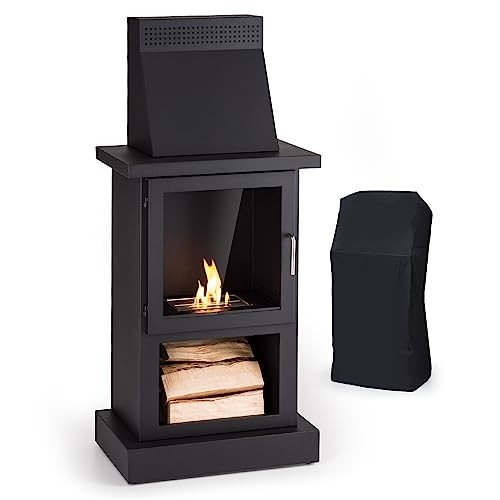Fireplaces in the UK: A Comprehensive Guide
Fireplaces have actually long been an essential part of British homes, providing both visual charm and practical warmth. As Buy Fireplace Online turns chilly, the attraction of a cozy fire beckons, transforming any living space into a sanctuary. In this post, we will explore the numerous kinds of fireplaces offered in the UK, considerations for installation, upkeep ideas, and answers to regularly asked questions about fireplaces.
Kinds of Fireplaces
When picking a fireplace for a UK home, a number of alternatives are available, each with unique features and advantages. The following table sums up the primary kinds of fireplaces popular in the UK:
| Fireplace Type | Description | Pros | Cons |
|---|---|---|---|
| Open Hearth | Traditional fireplaces that burn wood or coal, offering a rustic feel. | Authentic atmosphere; fantastic heat circulation | Less energy-efficient; needs chimney maintenance |
| Gas Fireplaces | Use natural gas or propane; can be direct vent or ventless. | Immediate heat; simple to run; cleaner burning | Preliminary installation cost; might need gas line |
| Electric Fireplaces | Mimic a flame utilizing LED lights and offer heat through electrical power. | Safe; easy to install; no flue needed | Less authentic; greater operating expense |
| Wood-burning Stoves | Closed-system fireplaces that burn logs, providing high efficiency. | High heat output; eco-friendly when using sustainable wood | Minimal visual compared to open hearth |
| Bioethanol Fireplaces | Environment-friendly alternative that burns bioethanol, developing real flames. | No chimney needed; flexible style alternatives | Can be pricey to run; limited heat output |
Benefits and drawbacks of Each Type
Open Hearth
- Pros:
- Provides character to any living area.
- Effective heat circulation due to open flames.
- Cons:
- Less energy-efficient and more smoke than modern choices.
- Requires regular cleansing and maintenance of the chimney.
Gas Fireplaces
- Pros:
- Easy to manage and run with the flick of a switch.
- Cleaner option with less soot buildup.
- Cons:
- Requires a gas supply and installation expenses can be high.
- Might not offer the exact same atmosphere as a traditional fire.
Electric Fireplaces
- Pros:
- Simple installation with no chimney or flue needed.
- Is available in different designs, looking like traditional alternatives.
- Cons:
- Lacks the realism of genuine flames and can become expensive with constant use.
Wood-burning Stoves
- Pros:
- Highly effective and generates considerable heat.
- Sustainable resource when utilizing responsibly sourced wood.
- Cons:
- Requires additional space for log storage and regular upkeep.
Bioethanol Fireplaces
- Pros:
- Flexible placement due to no requirement for traditional venting.
- Clean-burning and very little influence on indoor air quality.
- Cons:
- Can be less affordable for continuous usage compared to gas or wood.
- Heat output is less reliable for larger areas.
Setup Considerations
When installing a fireplace in a UK home, several elements should be taken into account:
- Building Regulations: Ensure compliance with local structure codes and safety guidelines.
- Chimney and Flue: Determine the need for a chimney or flue system based upon the kind of fireplace picked.
- Ventilation: Proper ventilation is essential for security, specifically with gas, wood, and bioethanol alternatives.
- Area: Consider the best area for the fireplace to optimize heat distribution and aesthetic appeal.
- Expert Help: Engaging a professional installer can guarantee a safe and accurate setup tailored to the particular kind of fireplace.
Maintenance Tips
Regular maintenance of a fireplace is important for both security and efficiency. Follow these standards to keep your fireplace in peak condition:
- Chimney Sweeping: Have your chimney expertly swept at least once a year to prevent clogs and reduce fire danger.
- Examine for Damage: Regularly examine for leaks, cracks, or damage, particularly in gas and wood-burning fireplaces.
- Clean the Surroundings: Ensure the area around the fireplace is free from dust and flammable products.
- Inspect Carbon Monoxide Detectors: Test detectors routinely, particularly in homes with gas-burning appliances.
- Store Wood Properly: If utilizing a wood-burning range, shop wood in a dry area to minimize moisture material.
Often Asked Questions
What is the best type of fireplace for a small space?
For small spaces, electric fireplaces or bioethanol models are typically recommended due to their smaller size, security functions, and aesthetics.
Are electric fireplaces cheaper to run than gas?
Electric fireplaces normally have a lower upfront cost, however depending upon electricity rates, they can be more pricey to operate long term compared to gas.
Do wood-burning ranges need a great deal of upkeep?
While they do require some maintenance, such as cleaning and routine chimney sweeper, many house owners find that modern wood-burning ranges are efficient and reasonably low upkeep compared to traditional open hearths.
Can I install a gas fireplace myself?
While some property owners might attempt DIY setup, it is extremely recommended to employ an expert for gas fireplace installations due to safety concerns and regulatory compliance.
How can I maximize the heat output of my fireplace?
To take full advantage of heat output from any fireplace, think about the following:
- Keep doors and windows closed during use.
- Usage heat-efficient logs or fuels.
- Guarantee appropriate air flow around the fire.
- Use fans or blowers that can distribute warm air throughout the space.
Fireplaces remain a valued component within UK homes, offering warmth, charm, and an inviting atmosphere. Provided the variety of options and their distinct features, house owners can pick the best fireplace to complement their living area while making sure security and performance. With routine maintenance and a clear understanding of the setup requirements, any person can delight in the beauty and convenience of a fireplace for several years to come.

